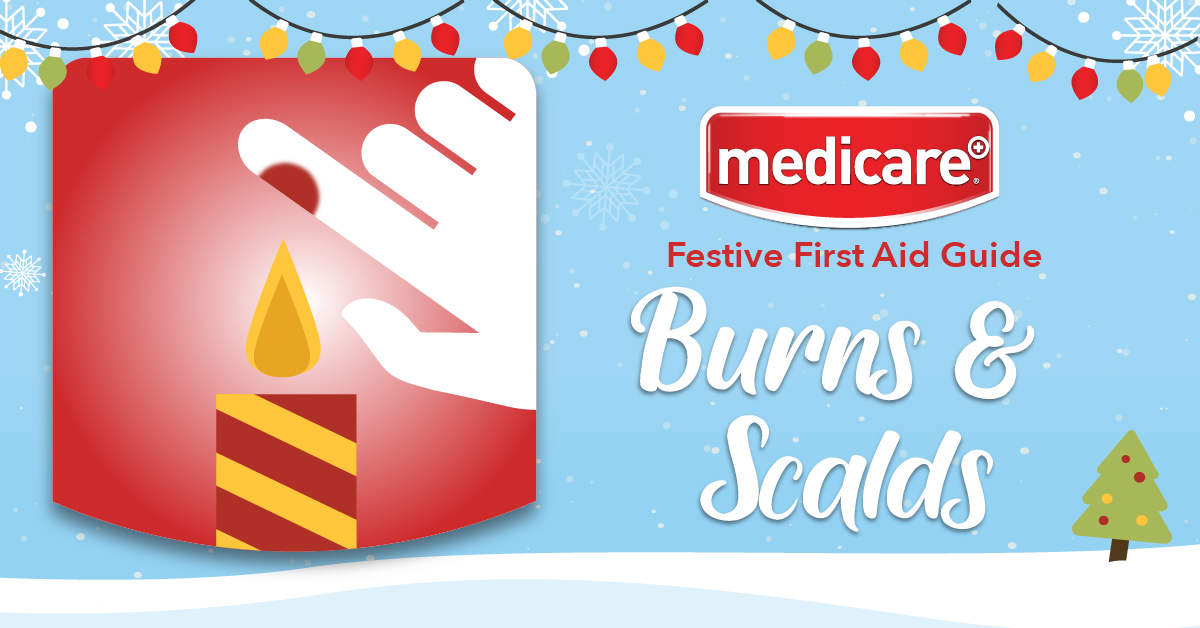Headlines
- Fleming Medical Achieves ISO 13485 Certification – Reinforcing Our Commitment to Patient Safety and Quality
- Gentle Daily Ear Care with Medicare Ear Spray
- Breathe Easy with Medicare Nasal Spray
- Fleming Medical Renews Support for Irish Heart Foundation’s “Before Damage is Done” Campaign with over €25K Donation
- First Response for Minor Burns: Why MD508 Medicare Burn Spray Belongs in Every Medicine Cabinet
The 12 Injuries of Christmas - Burns & Scalds
27 November 2019

BURNS & SCALDS
Burns and scalds are common injuries which, if only mild, can be easily treated at home. Examples of burns may involve candle lighting or lighting the Christmas Pudding while scalds could involve straining Brussel sprouts or pouring off the turkey fat.
Types of Burns
Superficial Burn (First Degree Burn): This type of burn affects only the outer layer of skin, otherwise known as the epidermis. This is classified as the mildest type of burn but is still tender to touch and may cause swelling.
Partial-thickness Burn (Second Degree Burn): While this type of burn looks and feels very similar to a superficial burn, you will experience blistering of the skin. It is important to remember not to burst these blisters, as their function is to prevent infection.
Full-thickness Burn (Third Degree Burn): A full-thickness burn affects both the epidermis and dermis layers of skin and, as you probably guessed, is the most severe type of burn. A burn like this may look pale, black, charred and waxy and surprisingly will be painless as the nerve endings will have been burnt away. If you experience this type of burn, you must seek urgent medical attention.
Treating a Burn
1. The first thing you must do after suffering a burn is cool it down, by running it under tepid water for a minimum of 20 minutes.
2. You must remove any jewellery, such as watches and rings, before skin tissue begins to swell.
3. Applying Medicare Burn Gel or Burn Gel Dressing and covering the burnt area with a non-fluffy sterile dressing such as Medporex will help to protect it from infection.
4. Treat the casualty for shock.
If a child or infant has suffered a burn, regardless of the severity, they must be treated in hospital. In addition to this, all full-thickness burns, burns that extend around the arm or leg or burns involving the face, genitals, hands or feet should be treated by a medical professional.

 Fleming Medical UK
Fleming Medical UK
